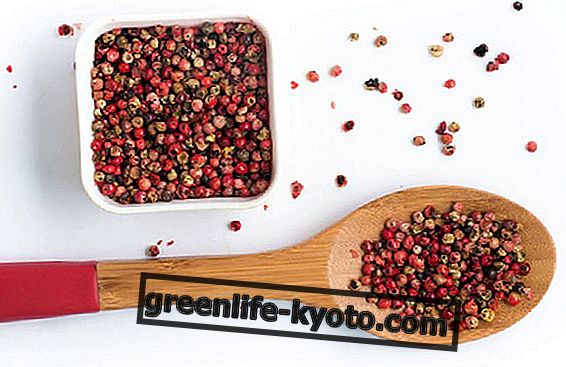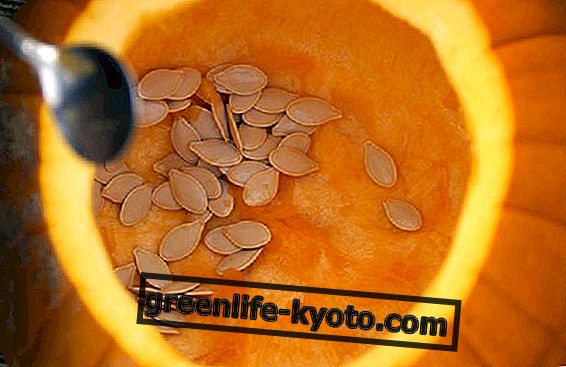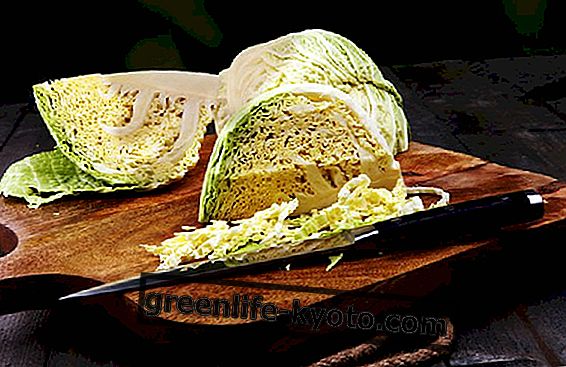Organic foods have at least 95% of the ingredients that compose it according to the "organic method". Let's find out better.
What are organic foods
A food can be labeled and advertised as a " biologically produced product " when at least 95% of its ingredients have been produced according to the "organic method" based on the adoption of cultivation and breeding techniques with low environmental impact and then subjected to inspections scheduled by the European control system throughout the production chain: from seeds to packaging, to the sale of the bulk product.
For example, processing, storage and conditioning systems must be able to guarantee that the processing of products from organic farming takes place separately from conventional ones and allow clear identification and traceability of the raw materials and the finished product.
Organic farming is therefore an agricultural production system that favors human health and the environment, respecting the entire ecosystem, thus also representing a model of sustainable development and thus achieving two objectives:
- a benefit for the community (health, environment);
- saving non-renewable resources by also recycling vegetable and animal waste, to improve and maintain soil fertility.
All this because it uses the same varieties of traditional agriculture, but is distinguished by the prohibition of synthetic chemical interventions (especially of a series of pesticides and plant growth regulators) and because it foresees the use of GMO plants up to a threshold of 0, 9% (EU decision of June 2007), as for traditional agriculture.
Compared to the latter, extensive agricultural techniques, organic or green manure fertilizers are used and in particular, for the defense of crops, preventive techniques are used (rotation, intercropping, selection of resistant varieties, hedges as physical barriers to external pollutants) or substances natural permitted (plant extracts, insects that prey on pests, minerals to correct the soil).
In the breeding is not allowed the use of hormones, antibiotics, other substances that stimulate the growth or the production of milk, while they are allowed free grazing, extensive farming, attention to animal welfare (environments and healthy shelters, short and not tiring transports, avoiding the use of sedatives, slaughtering by limiting tension, etc.), balanced diet with organic agricultural foods, preference of native breeds, etc.
How to recognize a product of organic farming?
In the printed labels starting from 1 July 2010, the new "European Union organic production logo" is reproduced , which must have the characteristics set out in Regulation (EU) 271/2010.
The label must include, in addition to the minimum legal provisions for all foods, specific indications:
- " Product obtained with organic production method " or " Product from organic farming " or " in conversion to organic farming " (only for vegetable products);
- controlled by ( name of the control body expressly authorized by the Ministry of Agricultural, Food and Forestry Policies) and Aut. Min. (N. ______________ of __ / __ / ____);
- batch identification code (16 characters: IT - abbreviation of the state in which the certification takes place _ _ _ - abbreviation of the control body _ _ _ _ - code of the biological operator F / T - fresh or processed product _ _ _ _ _ _ - identification number of the label);
- Community logo for the labeling of products obtained from organic farming (which, however, is optional).
Organic cosmetics: allowed and forbidden ingredients
The nutritional values of organic products
Many uncertainties still remain today regarding the quality of products from organic farming . The results of the studies present in the literature conducted on this topic are often conflicting: in the face of experiences that indicate that the organic farming method does not imply an improvement in the nutritional value of agricultural products, others have shown their higher content in dry matter ( less water), a greater presence of some vitamins (such as C and sometimes E), mineral salts and in particular antioxidants.
In summary it could be said that the higher quality of organic products is not related to the macronutrient content but is due to the lower presence of chemical contaminants and to the higher content of some micronutrients and antioxidants (especially carotenoids and flavonoids).
The National Research Institute for Food and Nutrition (INRAN) has found nutritional superiority, for example, in peaches, apples and organic kiwis that have a greater consistency and contain a greater quantity of nutrients and antioxidants such as natural sugars, vitamin C, beta-carotene and polyphenols. Furthermore, the tomatoes studied indicate that the quality of the soil is a key factor but not the only one: for example, the pulp of organic fruits contains less water and therefore has a higher nutrient concentration.
Of course, if we also consider that the absence of pesticides in organic fruit and vegetables allows us to be able to use the peel safely and that it is precisely in the skin of vegetables that the greatest quantity of vitamins and bioactive compounds is concentrated, this can make people think.
Another nutritional characteristic is that in processed products, obtained from organic farming, only additives, excipients and adjuvants from organic farming are allowed or, if technological, only those deemed harmless by the EU commission (eg citric acid, ascorbic acid, anhydride sulphurous), indicated in specific lists.
Among the aromas only the use of natural flavoring substances is permitted, while the use of synthetic dyes and any ingredient obtained or derived from GMOs is prohibited.
Did you know that improving nutrition could prevent more than a third of cancers? Find how!
What differences with the traditional method?
The four differences with the traditional production method can be summarized in the non-use of:
- chemical fertilizers that in the long run deplete the plants of substances such as proteins and trace elements (nitrogen fertilizers), magnesium and mineral salts (potassium fertilizers), vitamins (phosphate fertilizers);
- pesticides / pesticides that are accused of lowering organic defenses, causing allergies and damaging the transmission of nerve impulses;
- preservatives and dyes that are suspected of causing cancer (nitrites, nitrates, benzoates), of being irritants (sulfur dioxide), of causing allergies, states of restlessness, learning difficulties and raising the cholesterol level in adolescents;
- genetic manipulation whose risks are carcinogenesis, ecosystem alteration and other unpredictable effects.
If on the one hand we have a low productivity, sensitivity to pests, increased presence of mycotoxins of food products obtained with organic methods compared to traditional ones, on the other hand the food product obtained with this method guarantees a lower use of phytosanitary products and therefore a lower presence of residues in food, leading to community well-being and animal welfare.













